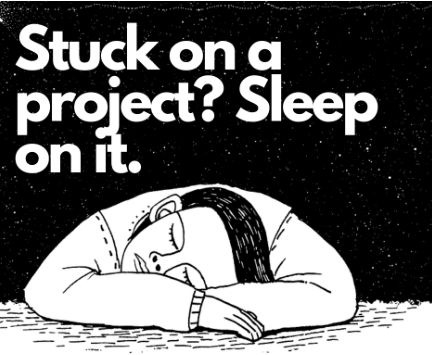By Hannah Manoucheri
As more and more work lives transfer online, full-service offices shift to coffee tables and kitchens as we continue to adapt our lives to quarantine. The new normal has changed in the agency landscape and life for students and professionals alike has shown how hard it is to keep home life outside of the home office.
Some prefer to merge the two, allowing their family and friends to creep into their workspaces and working hours, but the results are often similar across the board. Poor distinctions of what’s work and what’s not will prevent you from setting aside time to live your personal life outside of your work life.
According to Adda Birnir from Skill Crush, “without some serious boundaries, working from home means the office can easily seep into your life and make you feel totally unhinged.”
Whether you’re trying to start a new semester out strong, or you’re trying to make the most of your work-from-home environment, here are a few tips to get your work balance just right while we all continue to perfect our quarantine WFH routines:
Tip 1: Set your working hours
Whether you’re building a class schedule or designating what times you’ll be online and working, reinstating your work schedule is the easiest way to set up a boundary between work and home. It allows you to delegate time for you to be online and available to work on projects so your personal life can remain offline when your hours are up.
Tip 2: Let your loved ones know when you’re working
From roommates to family members, someone will always be there to bug you. Working from home means sometimes you have to let them know when you can and can’t be bothered! Building a system to alert them when they can come and talk to you creates a boundary that the people in your life can be aware of themselves.
The “Cup System” from Jessica McCabe with How to ADHD on YouTube is great for individuals working in a space where people can easily access you. Utilizing a red light, green light system, you simply:
- Set up three different plastic cups: red, green and yellow
- The red cup means “I can’t be interrupted right now”
- The yellow cup means “You can interrupt me if it’s important”
- The green cup means “I’m free to talk!”
- Stack the cups on top of each other with the color indicating your working condition on the top and adjust as your priorities shift.
If you can’t use cups right now, it’s okay to get creative! Handwritten notes, colored post-its, or even hand-drawn signs will all get the message across the same.
Tip 3: Stay accountable for taking a break
The easiest way to burnout at home is to avoid taking breaks. Setting aside time between your working hours to step away from the computer and stretch, drink some water or grab a snack, and rest your eyes is a great way to keep going strong throughout the end of your workday.
Take your break away from your workspace. This allows you to make the mental separation between what’s a place to work and what’s not. By reinforcing this separation in your break, you’re more likely to consistently respect the boundaries you set for yourself.
If you have trouble taking breaks on your own, find a break buddy! They could be a coworker on one of your teams, or even just your roommates, but their purpose is to make sure you take a break. However, this is a two-way street, you have to keep them accountable too! If you both take your break together, you’re more likely to commit to keeping it in your schedule.
Tip 4: Create a routine for logging on and off
Some have taken to calling this their fake commute but establishing a routine that helps you transition in and out of work mode will help you shift better between the two. This further creates the mental separation between what’s considered work and what’s not.
Logging on could be making a cup of coffee and drinking it while checking your email, or taking a walk while listening to a daily news briefing. Whatever it is, creating a morning ritual that helps your brain shift into work mode will help you dive into the workday more seamlessly.
Logging off could just be shutting down your computer. It could also be making dinner or spending time with friends. Creating a routine that helps reduce stress and take your mind off work helps shift your brain out of work mode.
Creating a separation between work and home means making time for yourself to be productive and relax. Quarantine means working from home, but it also means being kind to yourself.











